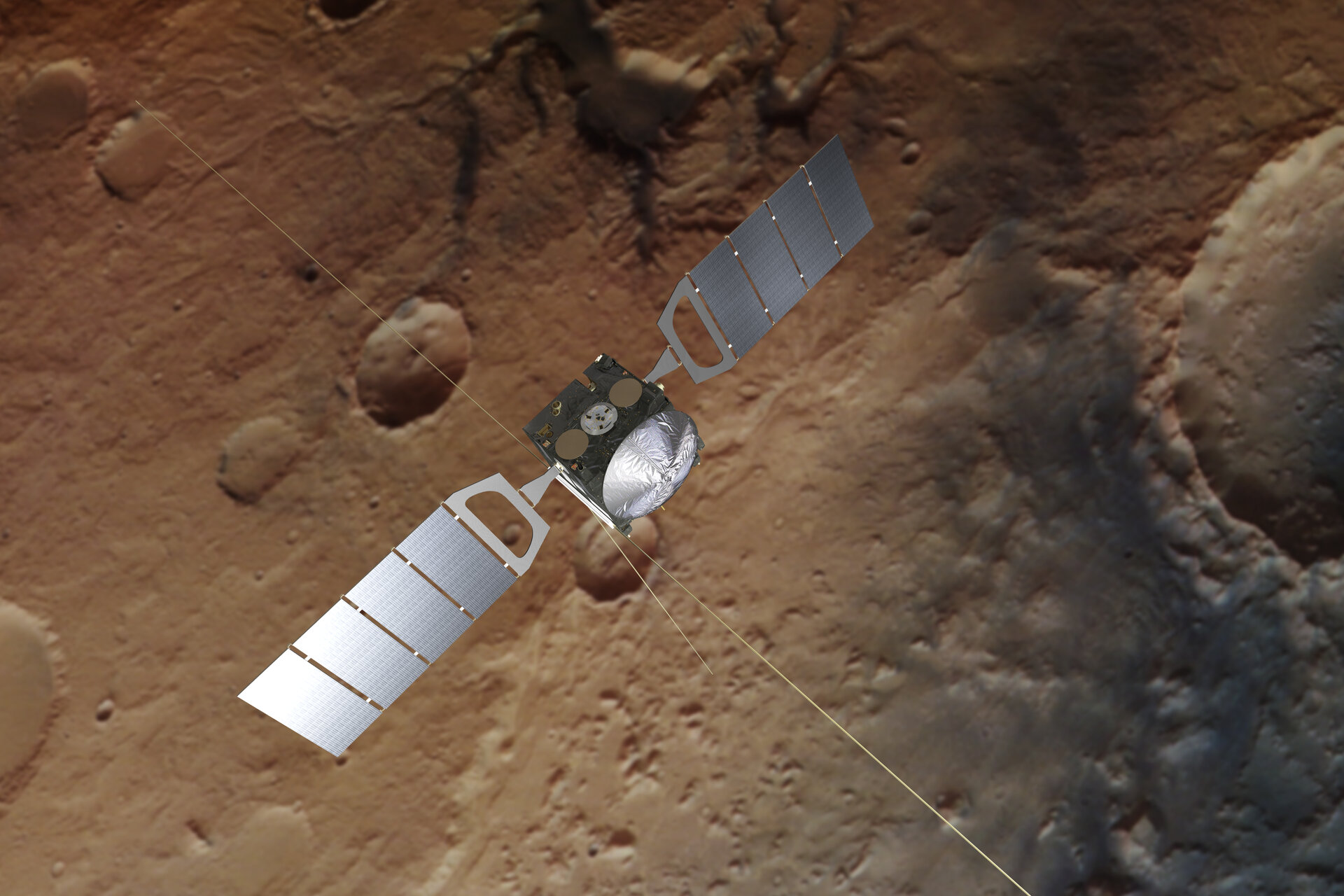ESA explores bold new approach to Mars orbit
ESA is venturing towards putting a spacecraft into orbit around Mars using a technique that engineers have studied for over half a century but never dared to attempt.
When Mars Express arrived at the Red Planet on Christmas Day 2003, it was travelling at 18 000 km/h. It had to fire its main engine to slow down enough to be captured into orbit and avoid flying off into space. The braking was a success, but it used 264 kg of propellant.

This technique has been used successfully at Mars for 16 missions since 1971, including ESA's Trace Gas Orbiter in 2016. But for future missions, there could be another way. Mars is surrounded by an atmosphere: what if we flew a spacecraft straight through it, making use of atmospheric drag rather than propellant to slow it down?
This idea, known as 'aerocapture', is not a new one. It has been tempting engineers since the mid-1960s for two main reasons. Firstly, it would reduce the amount of propellant that the spacecraft needs to carry. Secondly, it would mean that we could choose to arrive at a planet with a higher speed, cutting cruise time.
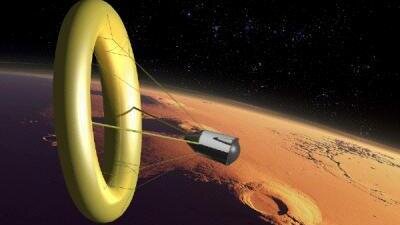
Aerocapture could enable small spacecraft to reach orbit, and in future be useful also for larger spacecraft in human exploration scenarios. While Mars is an attractive first destination for the application of aerocapture beyond Earth, the technique’s advantages are particularly apparent for ambitious scientific missions to worlds with atmospheres beyond Jupiter.
But aerocapture has never been attempted, neither at Mars nor at other worlds. The idea has so far been perceived as too risky for its first use in a scientific mission, and sending a spacecraft to Mars with the sole aim of demonstrating aerocapture had been thought too expensive.
The Preparation element of ESA's Basic Activities recently took a step towards turning Mars aerocapture from theory to reality. It funded two teams – one led by ArianeGroup and the other by Vorticity – to design spacecraft that use a feasible, simple aerocapture system. The hope was to become confident enough in aerocapture that we would be happy to consider using it on future science or exploration missions.
ESA engineer Andrew Ball oversaw the research: "The two teams took slightly different approaches and philosophies – this is great, because we can now combine the best of both."
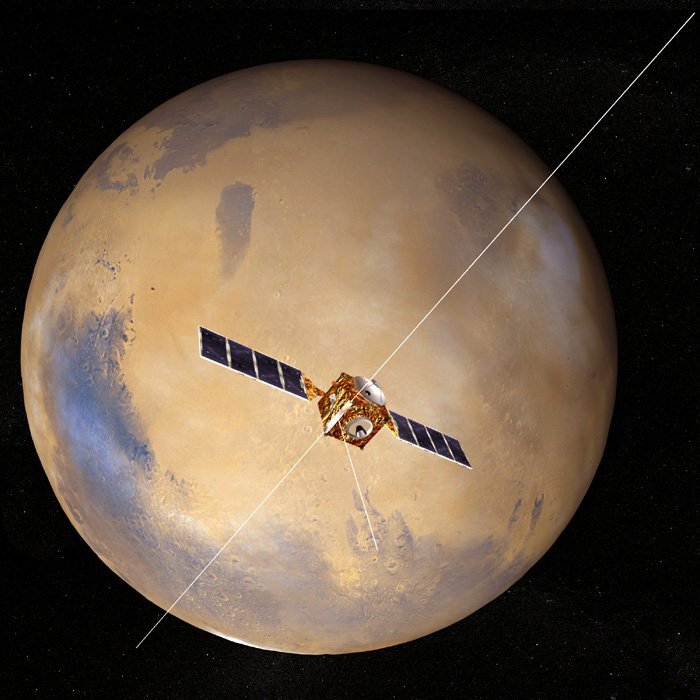
The topic was selected following a Preparation call for ideas for future mission concepts. Three separate teams submitted ideas on Mars aerocapture. Following open competition, ESA contracted ArianeGroup and Vorticity to outline designs and explore the main technology developments needed to make them possible.
Andrew says: "One of the starting points for my interest in this was thinking, well, aerocapture… nobody's done it yet but lots of space engineers think that somebody just needs to try it for the first time. We know that Europe can deliver spacecraft to Mars, so why not use our experience to go a step further and achieve Mars aerocapture?"
A key challenge with aerocapture comes down to control. When using thrusters to slow down a spacecraft, you are (not literally!) in the driving seat. But aerocapture demands just the right amount of atmospheric drag to put the spacecraft into the desired orbit. The drag depends on the size and shape of the spacecraft, its velocity, its entry angle, and the atmosphere of Mars.
It also depends on the device used to generate drag – typically a rigid shield, an inflatable shell or a trailing decelerator. The Preparation studies both employed the simplest version of aerocapture control, which starts with a large, outer drag device. At a particular moment, when the spacecraft calculates it has decelerated by the right amount, the outer part of this drag device is thrown off, leaving the smaller, central aeroshell to take care of the final part of the atmospheric pass. Once the spacecraft is out the other side of the atmosphere, it throws off the protective aeroshell, leaving the spacecraft alone to orbit Mars.
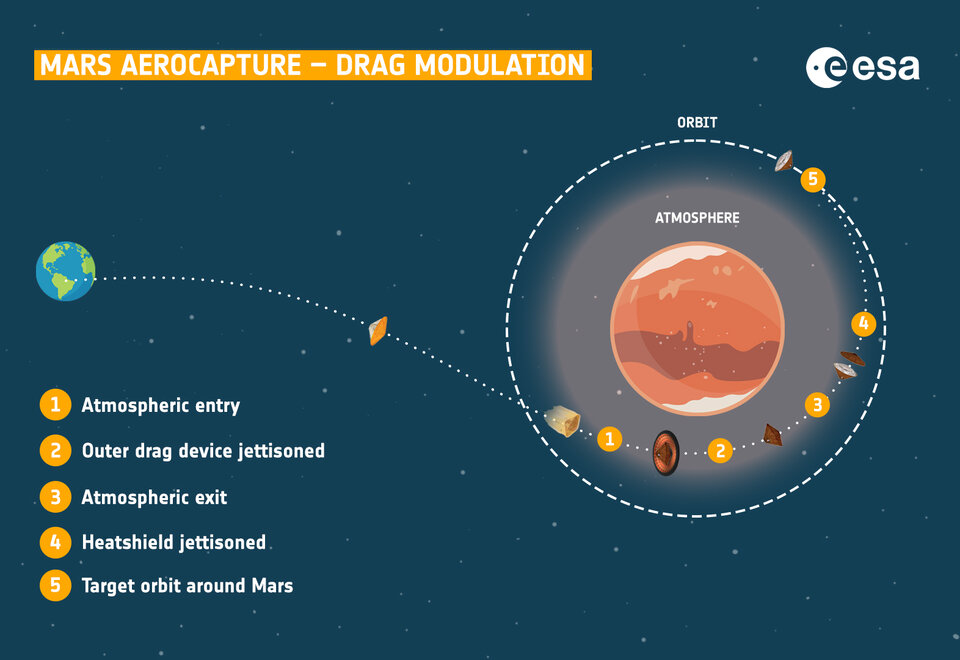
Each study explored two mission types: one standalone, and one 'piggybacking' on another Mars mission. For both types, the ArianeGroup team investigated inflatable drag devices with a rigid central shell. The Vorticity team investigated a different inflatable decelerator for the standalone mission, while for the piggyback mission they aimed for a concept based as far as possible on existing technologies – using only rigid drag devices.
"These were two of the first ever system studies to look at this specific aerocapture technique, using many existing technologies, and they went deeper than before," says Andrew. "We will digest the concepts further, discuss with experts on specific topics, and then come up with a more focused mission scenario and set of technology development requirements where needed. We hope that this will lead to a full mission concept study, including detailed launch and delivery scenario and a plan for the mission of the small orbiter after its aerocapture."
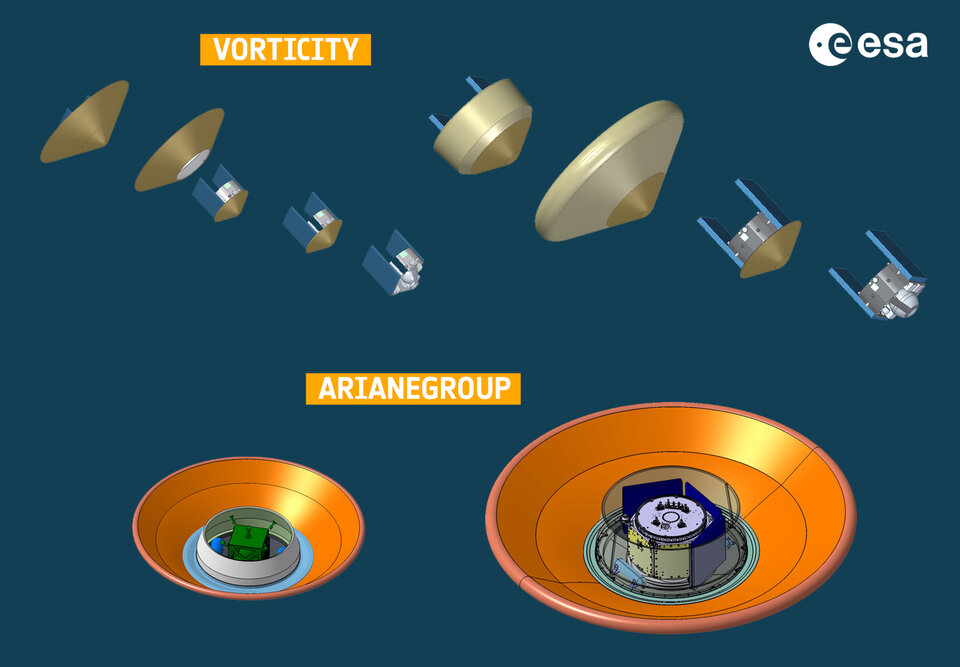
If ESA decides to proceed with such a mission, it could launch from the early 2030s, becoming the first demonstration of Mars aerocapture. It would be ambitious considering that it is not possible to fully test the technique around Earth due to the very different atmospheres and additional challenges of deep space navigation that come with visiting Mars.
"Even if we don't go much further with this specific concept, opportunities to make use of the technologies may arise elsewhere," concludes Andrew. "For example, some of them could be useful for deorbiting objects from Earth orbit, perhaps the return of upper stages. This could eventually even see a business case."


